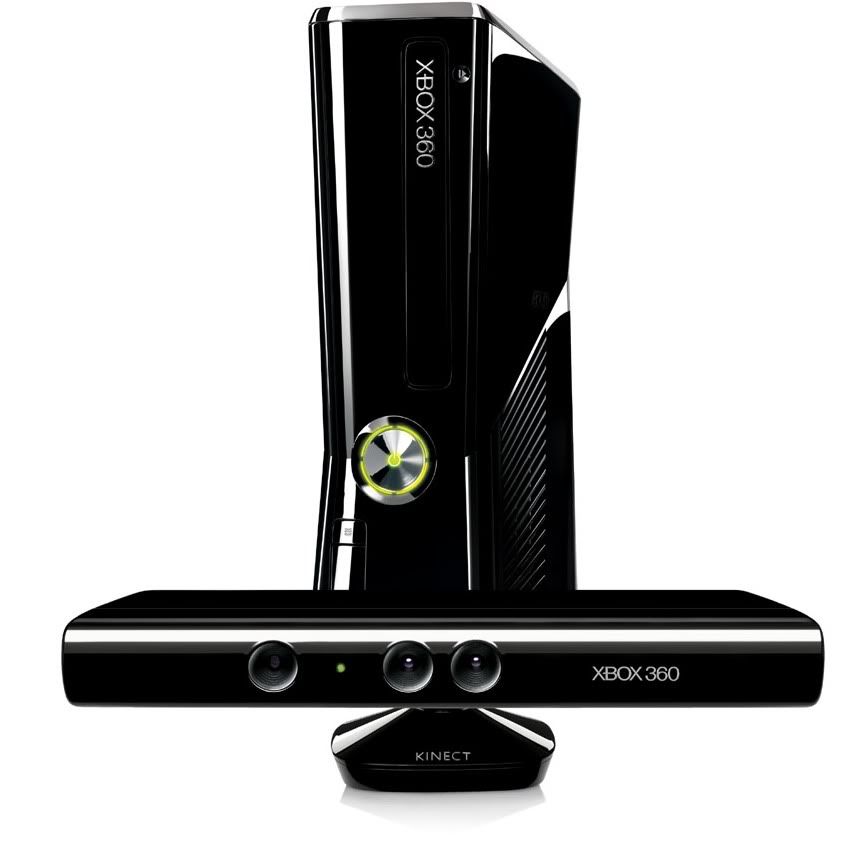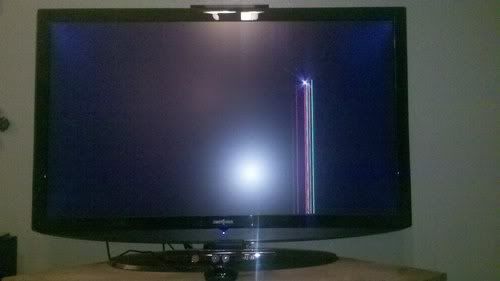Saturday, November 6, 2010
Kinecting With Technology
On Thursday (November 4th), Microsoft dropped it's new Kinect technology into the retail marketplace and, thus, into the hands of waiting consumers. Now, I definitely consider my involvement and participation in the video game arena to be far below the norm with regards to those in my age bracket, but this ground-breaking technology piqued my interest. Basically, do I want it? Well, let me examine the idea.
First, from a technological standpoint, this new product is definitely on the leading edge. Gaming technology manufacturers have been striving, since before the times of the original Nintendo, to bridge the communication gap between the user and the hardware. Personally, I can't think of a single instance when a company has attempted to improve, or revolutionize, a console without attempting to improve, or recreate, the controller. That quest seems centered around an urge to allow the user freedom to detach themselves from the working components of console itself. Where did we begin? How far have we come? Let's see.
Now, please excuse any errors in the following timeline as this is still an informal dissection of the topic.
At first, or at least the beginning of video games as I see them, there were pinball machines where the user had to use physical force (minor) to move the components and game parts (ball).
Then, there were systems such as the sit-down, electronic models (or tabletop models) still found in some diners and restaurants where the user was still in physical contact with the system itself. The real progression, in this case, was that the user was starting to use physical buttons to generate electrical signals to control objects and motion in a virtual world.
Systems then progressed to the level of wired controllers, such as the Atari, where, though physically tethered to the console itself, users were given a slight bit of freedom with regards to their physical location. In my opinion, this is truly the jumping-off point. It allowed an outlet for multi-player gaming experiences since allowing the controller to be separate from the console would, in theory, create the opportunity to attach a second controller. You didn't, necessarily, have to contain the brains of the system in each controller, and computing power had progressed. So, why not have two players interacting in one game? Programmers pondered the concept for years, and the amount of testing must have been unthinkable. Developers were putting it all on the line, and there had to be mountains of failures, but then, there was Pong! I don't think you can drop that name anywhere in the industrialized world and expect to find someone needing an explanation.
Pong may have seemed revolutionary, but the race had just begun, and developed were well aware of that. Though adding more controls and functions, manufacturers continued this focused progression through attempting to remove the wire, or tether, itself from the experience. At first, companies offered this wireless technology as an option, or after-market accessory, but they quickly progressed towards offering it as the primary, and included, means of interaction with the console. For instance, most Playstation 2 and XBOX consoles were introduced with wired controllers, but you couldn't find an avid gamer who hadn't at least experimented with an after-market, wireless controller. Eventually, new systems such as the Playstation 3 and XBOX 360 began to package new consoles with their own wireless controllers. It had become the norm.
Very recently, Nintendo offered the Wii consoles, where the controller used its sensitivity to motion as a means of allowing the user to control the game with merely their movements, but it did not remove the ability to use physical buttons still found on the controller. Gaming experts thought such a concept was ridiculous and wouldn't be accepted, but they were proven wrong. This new idea was not only accepted and widely purchased, but it brought a video games into new markets. For instance, the elderly were often considered as being impossible and unthinkable to rope in, but this new technology, which many thought might flop, even dragged them into the gaming arena. It seems Nintendo, once again, took a gamble, and Sony was not going to be left in their wake. Seeing Nintendo's success, Sony did not forgo an opportunity to expand their market and was quick produce a similar option for their systems. But where was Microsoft?
Microsoft had been completely absent from this new market until, on Thursday, they introduced this new Kinect technology. It is, to say the least, avant-garde. They have chosen to forgo the motion-sensitive controllers, or even controllers in general, and rely on detecting the movements of the user through a unique camera system. I mean, Sony did offer such a controller system as part of a couple games a few years back, but Microsoft has wrapped their whole system and team around it while, of course, revolutionizing the technology itself. They have truly made it their own, and the system can even recognize and separate individuals using facial-recognition software. Since the system attempts to fully place the user in the game, it can accept both physical/motion commands and auditory/spoken cues. It can even recognize when a specific person enters the field of view and personalize its experience to them. It's almost like a dog greeting its owner upon their return. Sure, the dog might recognize and greet everyone, but there is a difference in the way it reacts to its owner. The Kinect system can treat an individual, or individuals, as its master and take various actions when they enter. It can bring up their avatar, bring up a menu or even take them to their Netflix. So, in itself, this system is definitely in a league of its own.
Now, even though I think that, on a technological level, Microsoft's introduction of this technology is definitely advanced, admirable and commendable, I can't say how I feel about the validity of the concept itself. It will, most likely, capture the interest of those who are drawn to the pleasures of the Wii console, but most gamers I know tend to rely on games for a different type of entertainment. Most of them seem to fall into the stereotype many of us associate with the gaming community. They grab their controller to relax on the couch and merely move their hands to make great moves on the screen. They, to a degree, consciously choose this option over more physically active ones. Now, this is ripping the controller from their hands and forcing them to move around. That may be fun at times, but hardcore gamers probably wont be quick to adopt it, especially when trying not to wake their neighbors at 1:30am by jumping up and down to spike a volleyball. I really don't believe that is something they want, and I think it may be moving a little too drastically. I think Microsoft understands that as well as I don't think they have completely removed the controller as an option.
In the end, since we live in a society of consumerists where it's cool to have the newest in expensive toys, I think this will probably fly off the shelves. I just know that, though I am often far too quick to fall into that materialistic consumer role, this is not pushing me towards swiping my plastic at the local Best Buy.
Now, in order to bring a little humor to this somewhat boring examination of Kinect (I still don't know if I should call it "Kinect", "XBOX Kinect" or "The Kinect"), let me share this little story.
Within 24 hours of Kinect hitting the market, Phil Villarreal, an author and a critic, had already managed to break his flat-screen TV. Wait, wasn't that a reported problem with the Wii? Wouldn't removing the controller remove this risk? Well, enjoying the first day of this new product's release, Phil was playing a volleyball game into the early hours of the morning. At around 1:30am, while playing beneath a ceiling fan with a hanging chain for a switch, he aggressively went for a virtual spike. Apparently, he spiked the chain into the screen of the TV and managed to create that beautiful shooting star pattern on the right side of the screen. It seems that, even without a controller, someone has already managed to destroy their TV through such an active play style.
I know that may be a little mean to laugh at others' plight and I strive to avoid it, but some good has to come from every situation, and, in this case, that good is the rest of the world getting a good laugh.
Links:
Microsoft Kinect: Website
Phil Villarreal Story: Website
Subscribe to:
Post Comments (Atom)


No comments:
Post a Comment